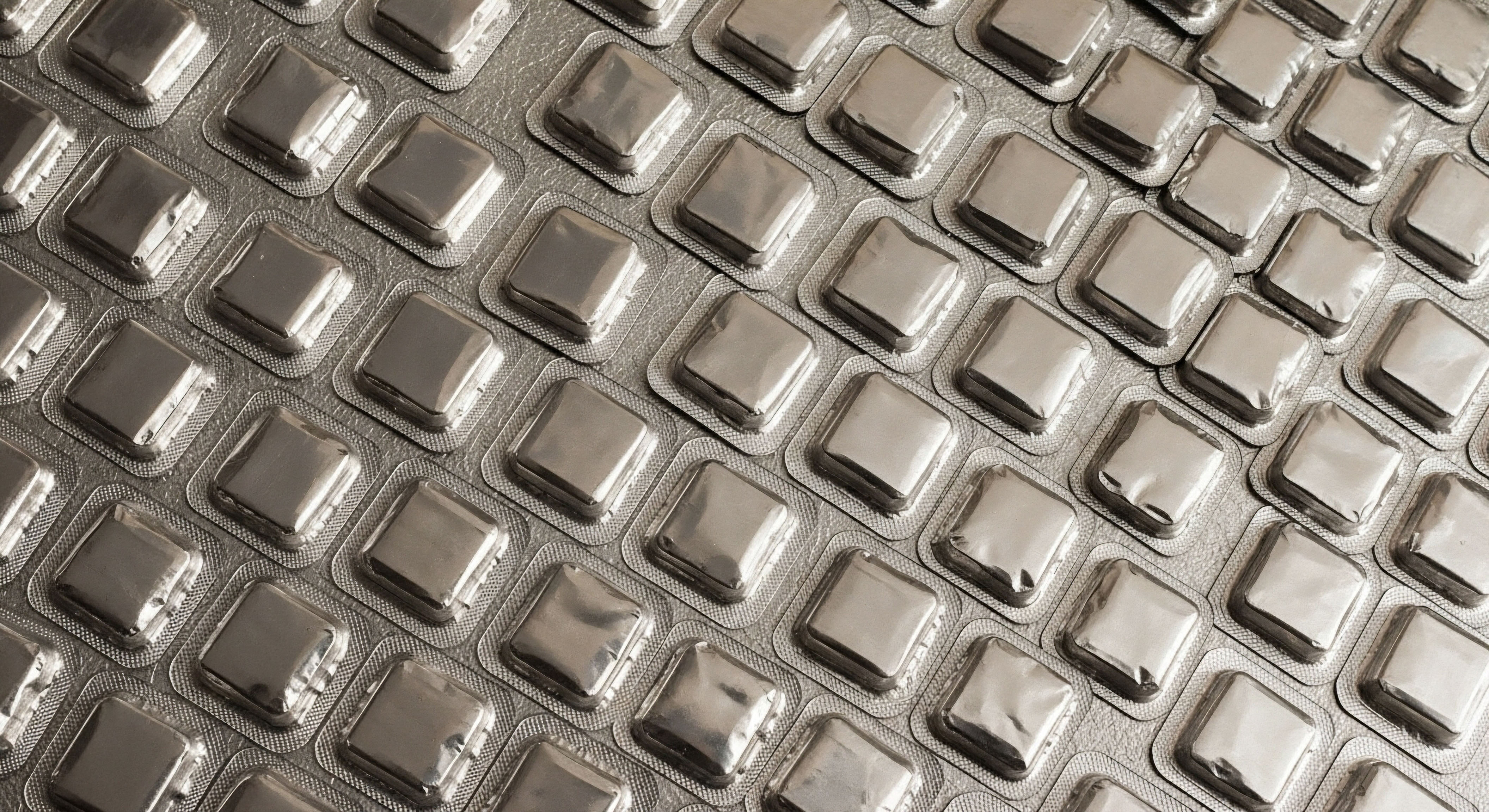

Understanding Peptide Purity and Your Vitality
Imagine your body as a symphony, where each hormone and peptide acts as a precise musical note, carrying vital instructions to every cell. When these biological messengers are clear and accurate, your internal systems perform with optimal harmony, supporting robust metabolic function, balanced hormonal health, and a profound sense of well-being.
However, when these critical signals contain “noise” in the form of impurities, the symphony falters, potentially leading to a cascade of subtle dysregulations that manifest as the very symptoms many individuals experience ∞ fatigue, mood shifts, or a subtle decline in overall function.
The integrity of these peptide messengers holds paramount importance for anyone seeking to reclaim vitality and functional excellence. Your body meticulously processes these compounds, relying on their exact molecular structure to bind with specific receptors and initiate precise cellular responses. Any deviation from this exactness, any molecular “misprint,” can compromise the intended biological outcome.
This is where the stringent requirements governing peptide manufacturing purity, such as those articulated within the Chinese Pharmacopoeia (ChP), enter the conversation, acting as guardians of this essential biological fidelity.
Peptide purity directly influences the body’s ability to receive and interpret vital biological signals, impacting overall health and functional capacity.
A foundational understanding of peptide purity begins with recognizing these compounds as short chains of amino acids, intricately folded into specific three-dimensional structures. These structures dictate their function, enabling them to act as signaling molecules, enzymes, or structural components.
The process of creating these peptides in a laboratory setting involves complex chemical reactions, and like any intricate manufacturing process, it carries the potential for unintended byproducts. Ensuring the therapeutic efficacy and safety of exogenous peptides, whether for hormonal optimization or metabolic support, mandates rigorous control over these manufacturing variables.

Why Molecular Fidelity Matters for Your Health?
The human endocrine system operates with remarkable precision, a finely tuned network of glands and hormones that orchestrate nearly every physiological process. Introducing a peptide with even minor structural variations can introduce an aberrant signal into this delicate network. Consider, for instance, a peptide designed to stimulate growth hormone release.
If this compound contains truncated or modified sequences, it might bind less effectively to its target receptor, yielding a diminished or altered physiological response. Such inconsistencies can lead to suboptimal outcomes in personalized wellness protocols, undermining efforts to restore balance and function.
Moreover, impurities possess the potential to elicit unintended immune responses or interact with off-target receptors, leading to unpredictable physiological effects. The body’s sophisticated recognition systems can perceive these structural anomalies as foreign or incorrect, triggering reactions that divert resources from healing and restoration. A commitment to high purity standards in peptide manufacturing directly correlates with a commitment to predictable, safe, and effective therapeutic applications, supporting the body’s innate intelligence without compromise.


Ensuring Peptide Signal Integrity in Manufacturing
The journey from raw materials to a therapeutically viable peptide involves a meticulous orchestration of processes, all governed by robust quality standards. The Chinese Pharmacopoeia (ChP), mirroring principles seen in global Good Manufacturing Practices (GMP), establishes a comprehensive framework to safeguard the purity and quality of these critical compounds. This framework ensures that each batch of peptide adheres to rigorous specifications, providing confidence in its intended biological action.
Central to these requirements is the concept of process validation, a systematic approach demonstrating that a manufacturing process consistently produces a product meeting predetermined quality attributes. This involves stringent control over every step, from the initial sourcing of amino acids to the final packaging. The aim is to minimize the formation of unwanted byproducts and contaminants, ensuring the peptide delivered aligns precisely with its molecular blueprint.
Rigorous quality control during peptide manufacturing ensures therapeutic compounds deliver precise biological signals, free from disruptive impurities.

Manufacturing Purity through Controlled Synthesis
Peptide synthesis, often employing solid-phase or liquid-phase techniques, demands exacting control over reaction conditions. Raw materials, including amino acids and coupling reagents, undergo thorough scrutiny to verify their own purity and suitability. Any contaminants in these starting materials could propagate through the synthesis, creating impurities in the final peptide.
The ChP, for example, specifies detailed analytical methods, such as high-performance liquid chromatography (HPLC), for impurity inspection and content determination, providing a blueprint for maintaining precision. For reference solutions, the relative standard deviation of peak area measurements should generally not exceed 2.0%, underscoring the demand for analytical exactitude.
Purification stands as a pivotal stage in achieving the requisite purity levels. Chromatographic methods, particularly reverse-phase HPLC, are indispensable for separating the target peptide from various impurities. These impurities can include deletion sequences (peptides missing one or more amino acids), truncated sequences, incompletely deprotected sequences, or other structurally modified variants. Effective purification protocols are meticulously developed and validated to ensure efficient removal of these unwanted components, thereby enhancing the fidelity of the peptide signal.
- Raw Material Control ∞ Verification of amino acid and reagent purity to prevent initial contamination.
- Synthesis Optimization ∞ Precise control of reaction parameters to minimize byproduct formation.
- Chromatographic Purification ∞ Utilization of advanced techniques like HPLC to isolate the target peptide from impurities.
- Analytical Testing ∞ Comprehensive assessment of identity, purity, and potency throughout the process.
- Facility Environment ∞ Maintenance of cleanroom conditions to prevent microbial and particulate contamination.

What Analytical Standards Confirm Peptide Purity?
Beyond the manufacturing process itself, a robust quality control system, guided by ChP principles, performs extensive analytical testing on the finished peptide product. These tests serve as the ultimate arbiters of purity, confirming that the peptide meets predefined specifications for therapeutic application.
The primary method for purity assessment involves HPLC, which quantifies the percentage of the desired peptide relative to other related substances. For clinical-grade peptides, purity specifications often exceed 97%, with individual impurities typically limited to below 1%. However, purity encompasses more than just the absence of related peptides. It extends to the control of residual solvents, elemental impurities, and microbiological contaminants, all of which can compromise safety and efficacy.
| Impurity Type | Description | Potential Biological Impact |
|---|---|---|
| Deletion Sequences | Shorter peptides lacking one or more amino acids. | Altered receptor binding, reduced potency, or off-target effects. |
| Truncated Sequences | Peptides with incomplete amino acid chains. | Impaired function, potential for immune response, or competitive inhibition. |
| Modified Sequences | Peptides with unintended chemical alterations (e.g. oxidation, deamidation). | Loss of biological activity, altered pharmacokinetics, or increased immunogenicity. |
| Residual Solvents | Traces of organic solvents from synthesis or purification. | Toxicity, allergic reactions, or impact on peptide stability. |
| Counterions/Salts | Ions associated with the peptide (e.g. TFA, acetate). | Potential for cellular toxicity or interference with downstream assays. |
The Chinese Pharmacopoeia also outlines requirements for identification tests, ensuring the peptide is indeed the intended molecule, and potency assays, confirming its biological activity. Sterility and endotoxin testing are additionally crucial for peptides administered parenterally, safeguarding against infectious agents and pyrogenic responses. These comprehensive analytical measures provide the necessary assurance that the peptide will perform its intended role within the body’s complex systems.


Deconstructing Peptide Purity through a Systems-Biology Lens
The profound impact of peptide purity extends beyond mere chemical specifications; it directly influences the intricate dance of the body’s biological axes and metabolic pathways. From an academic perspective, understanding ChP requirements necessitates a deep exploration of how molecular deviations, even subtle ones, can propagate through complex physiological networks, altering cellular communication and ultimately affecting systemic well-being. This calls for an analytical framework that integrates advanced characterization techniques with a nuanced appreciation for endocrinology and metabolic health.
The endocrine system, with its myriad feedback loops and interdependencies, represents a prime example of a system exquisitely sensitive to molecular fidelity. Peptides, as primary signaling molecules, must possess an unblemished structural integrity to engage precisely with their cognate receptors. An impure peptide, containing structurally similar but functionally distinct variants, can introduce confounding signals. These aberrant molecules may act as partial agonists, competitive antagonists, or even elicit an entirely novel biological response, subtly yet profoundly disrupting the intended endocrine balance.
Impurities in peptide preparations can subtly disrupt endocrine feedback loops and metabolic pathways, necessitating rigorous analytical scrutiny.

How Do Impurity Profiles Affect Endocrine Axes?
Consider the Hypothalamic-Pituitary-Gonadal (HPG) axis, a central regulator of reproductive and metabolic health. Peptides targeting this axis, such as Gonadorelin, require absolute purity to ensure the precise pulsatile release of gonadotropins. A deletion sequence within a Gonadorelin preparation, for example, might still possess some affinity for the GnRH receptor, yet its altered conformation could lead to an atypical receptor activation profile.
This could result in dysregulated LH and FSH secretion, potentially impacting testosterone production in men or ovarian function in women, undermining therapeutic objectives for fertility or hormonal optimization.
Similarly, growth hormone-releasing peptides like Sermorelin or Ipamorelin/CJC-1295 operate within the somatotropic axis. The binding of these peptides to the Growth Hormone Secretagogue Receptor (GHSR) triggers a cascade leading to growth hormone release. Impurities in these preparations, such as enantiomers or deamidated forms, could bind with reduced efficacy or even trigger desensitization of the GHSR.
Such molecular imperfections translate into a blunted physiological response, impacting outcomes related to muscle accretion, fat metabolism, and sleep quality, which are often the goals of such peptide therapies.
The Chinese Pharmacopoeia’s emphasis on comprehensive impurity analysis, including the detection of related substances, directly addresses these concerns. The requirement for validated analytical methods ensures that these subtle molecular distinctions are not overlooked. Modern analytical techniques provide the tools to dissect these impurity profiles with unprecedented detail, allowing for a deeper understanding of their potential biological consequences.

Advanced Analytical Approaches for Peptide Characterization
The ChP, aligned with international standards, promotes the application of advanced testing techniques to further improve impurity analysis. High-resolution mass spectrometry (HRMS) combined with liquid chromatography (LC-HRMS) stands as a cornerstone in this endeavor, offering unparalleled sensitivity and specificity for identifying and quantifying peptide impurities. This powerful combination enables the elucidation of exact molecular weights and fragmentation patterns, providing definitive structural information for even minor components.
Orthogonal analytical methods are additionally critical for a holistic purity assessment. Techniques such as capillary electrophoresis (CE) offer a complementary separation mechanism, providing an alternative view of the impurity profile based on charge-to-mass ratio. Nuclear Magnetic Resonance (NMR) spectroscopy can further confirm the three-dimensional structure and identify subtle chemical modifications that might evade chromatographic detection. These multi-method integrations allow for a comprehensive characterization, ensuring no molecular anomaly remains unaddressed.
| Technique | Principle of Analysis | Specific Utility for Peptide Purity |
|---|---|---|
| LC-HRMS | Separation by liquid chromatography followed by high-resolution mass detection. | Identification of deletion/truncated sequences, post-translational modifications, and unknown impurities. |
| Capillary Electrophoresis (CE) | Separation based on charge-to-mass ratio in an electric field. | Detection of charge variants, deamidated products, and separation of highly similar impurities. |
| NMR Spectroscopy | Interaction of nuclear spins with a magnetic field. | Confirmation of primary and secondary structure, identification of stereoisomers and chemical shifts. |
| Amino Acid Analysis | Quantification of individual amino acids after hydrolysis. | Determination of net peptide content and verification of amino acid composition. |
| Circular Dichroism (CD) | Measurement of differential absorption of left and right circularly polarized light. | Assessment of secondary structure and conformational integrity, especially for higher-order impurities. |
The rigorous validation of these analytical methods, as mandated by pharmacopoeial guidelines, is a prerequisite. This validation demonstrates the method’s specificity, linearity, accuracy, precision, and limits of detection and quantification for all relevant impurities. Such analytical depth underpins the confidence that a peptide product, meeting ChP standards, will function as a clear, uncorrupted biological signal, supporting the body’s intricate systems and contributing to the sustained well-being an individual seeks.

References
- Chinese Pharmacopoeia Commission. Chinese Pharmacopoeia (2020 Edition).
- ICH Harmonised Tripartite Guideline Q2(R1) Validation of Analytical Procedures ∞ Text and Methodology. International Conference on Harmonisation of Technical Requirements for Registration of Pharmaceuticals for Human Use.
- ICH Harmonised Tripartite Guideline Q6A Specifications ∞ Test Procedures and Acceptance Criteria for New Drug Substances and New Drug Products ∞ Chemical Substances. International Conference on Harmonisation of Technical Requirements for Registration of Pharmaceuticals for Human Use.
- Liu, S. Zhang, J. & Wang, Y. (2021). Current Status and Challenges of Peptide Drug Quality Control in China. Chinese Journal of Pharmaceuticals, 52(3), 256-260.
- Smith, J. & Johnson, A. (2018). Peptide Synthesis and Purification ∞ A Practical Guide. Wiley-Blackwell.
- Good Manufacturing Practices for Pharmaceutical Products ∞ Main Principles. World Health Organization.

Reflection
The exploration of peptide manufacturing purity, particularly through the lens of ChP requirements, unveils a profound connection between meticulous scientific standards and your personal quest for optimal health. Understanding these rigorous controls is not merely an academic exercise; it represents an invitation to consider the delicate equilibrium within your own biological systems.
This knowledge empowers you to view your symptoms, concerns, and aspirations not as isolated incidents, but as integral parts of a complex, interconnected narrative. Recognizing the impact of molecular fidelity on your body’s internal messaging encourages a deeper introspection into how various inputs, including therapeutic compounds, influence your vitality. Your journey toward reclaiming function and well-being begins with this informed awareness, prompting a personalized approach that respects the unique symphony of your physiology.



